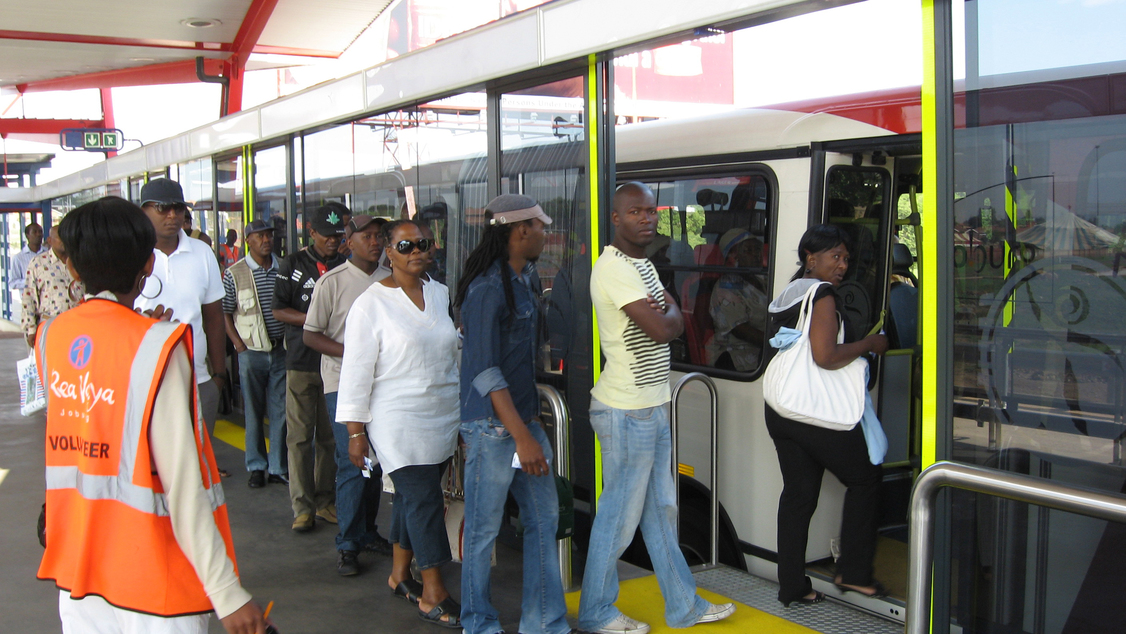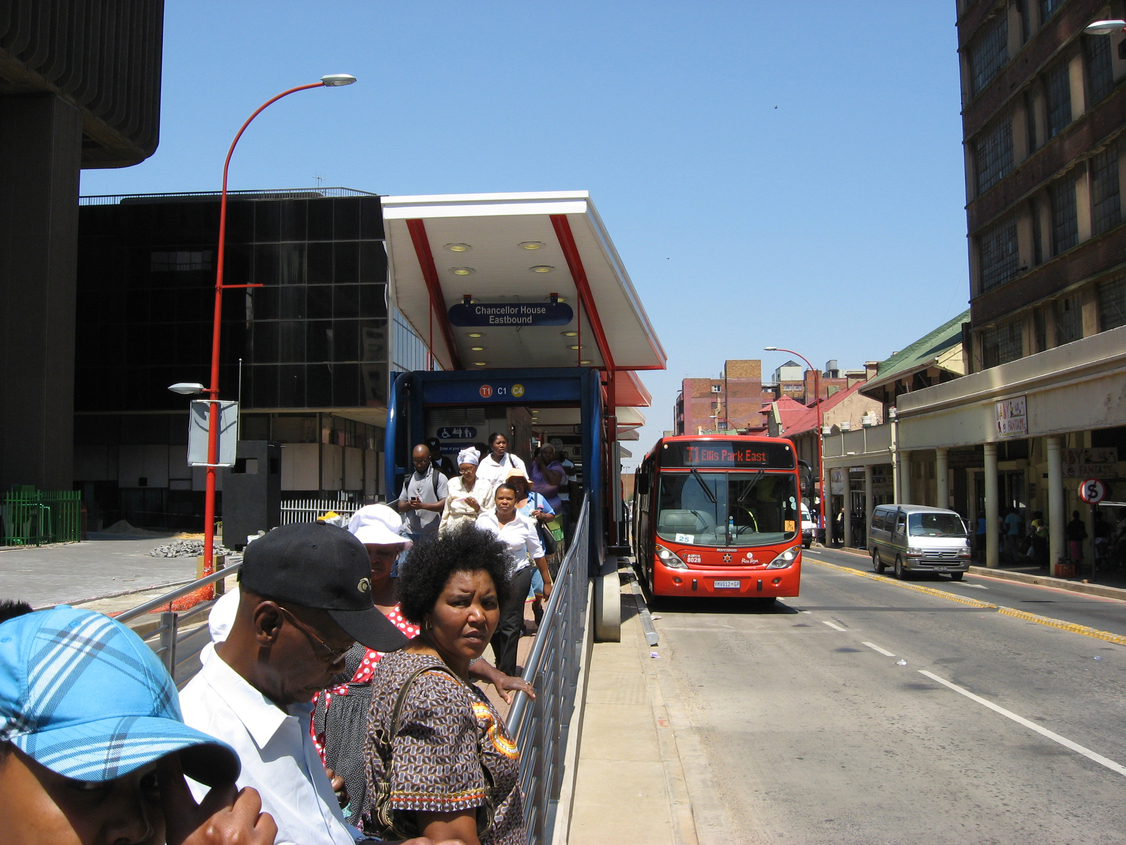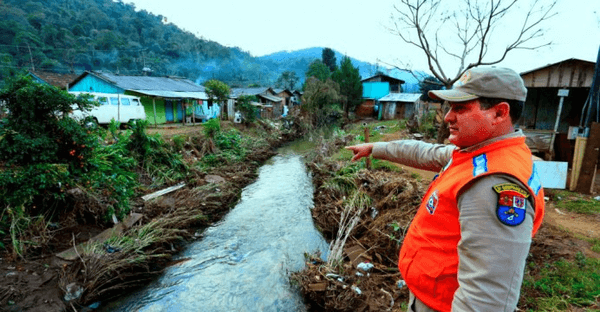City
Johannesburg
Main actors
City Government, National Government, Private Sector, Community / Citizen Group
Project area
Metropolitan Area
Duration
Ongoing since 2006
The Rea Vaya (‘we are going’) Bus Rapid Transit (BRT) system provides accessible, reliable and affordable public transport services for residents of Johannesburg and reduces the city’s C02 emissions.
The City of Johannesburg’s Rea Vaya BRT is used by 45,000 commuters daily. During peak hours buses arrive and depart at three minute intervals running along dedicated routes to ensure speed of service. A high-tech control room monitors all bus routes and stations. The control room delivers real-time tracking of bus movements and staff can communicate with individual drivers, ensuring buses run on time and quick solutions are found for any eventuality. The fleet of buses are the most modern available, with sophisticated engineering to ensure carbon emissions are as low as possible. The System operates on well planned transport arteries known as the “Corridors of Freedom” that provide residents with increased freedom of movement as well economic freedom and liberates them from the apartheid spatial legacy characterized by informal settlements, poor schooling and limited recreational choices.
The Rea Vaya BRT will service an area spanning 330 kilometres allowing more than 80% of Johannesburg’s residents to catch a bus.
Sustainable Transport Award
This project was shortlisted for the 'Sustainable Transport Award' in 2010 in the following category: Honorable mention.
On Map
The Map will be displayed after accepting cookie policy




